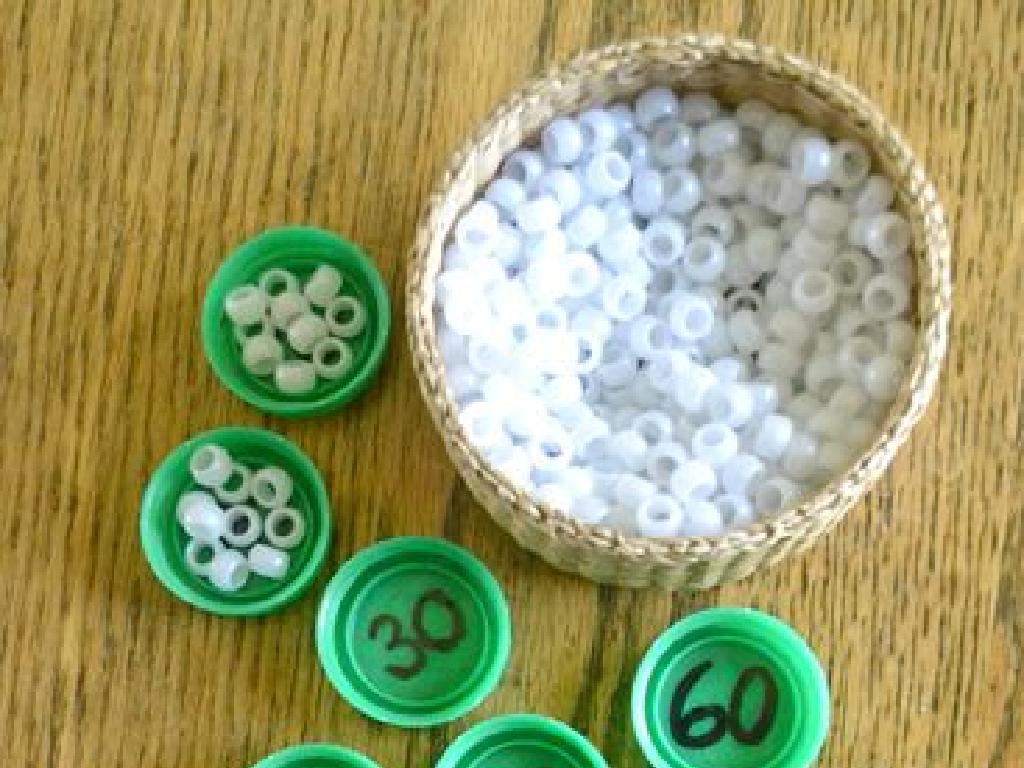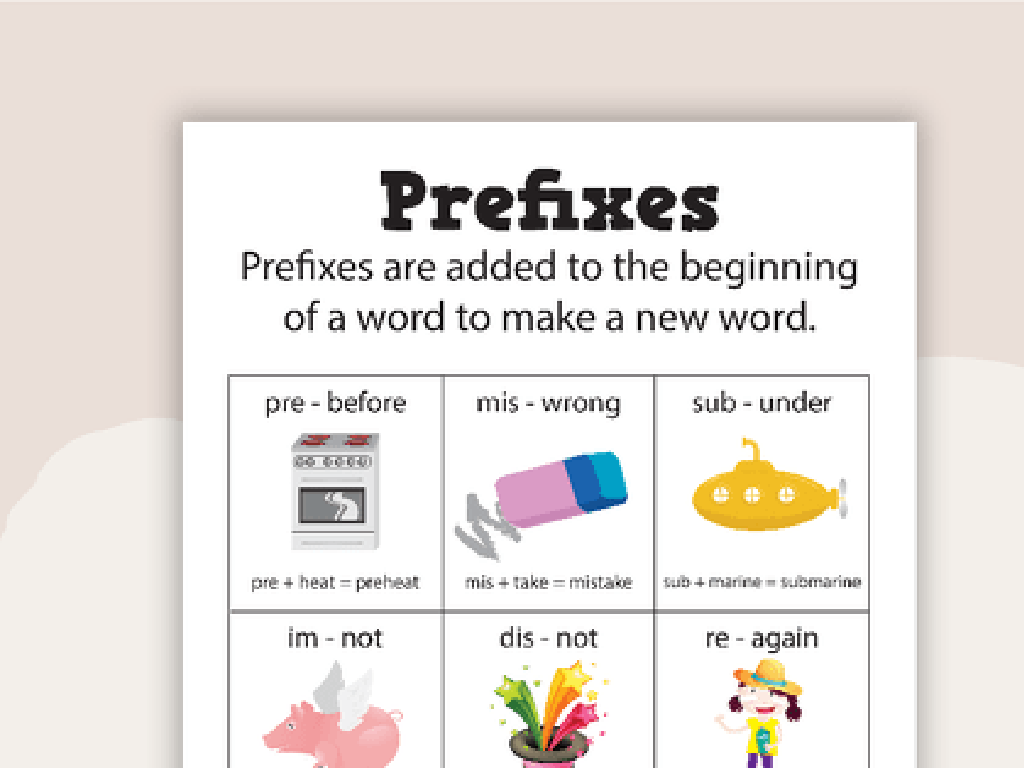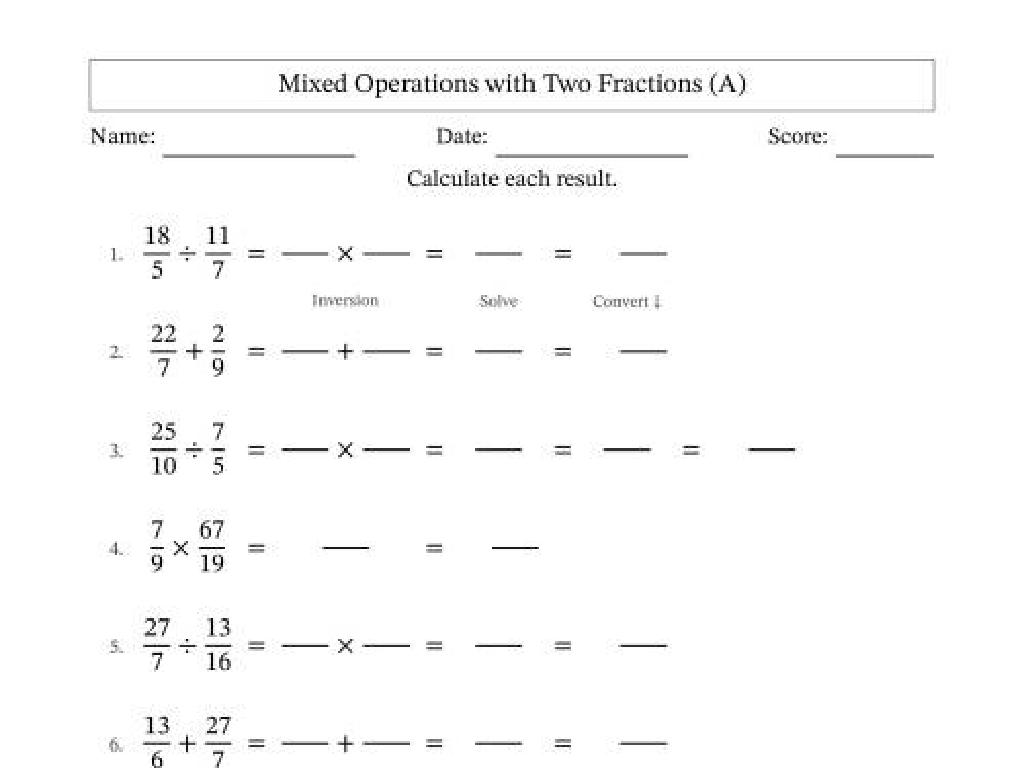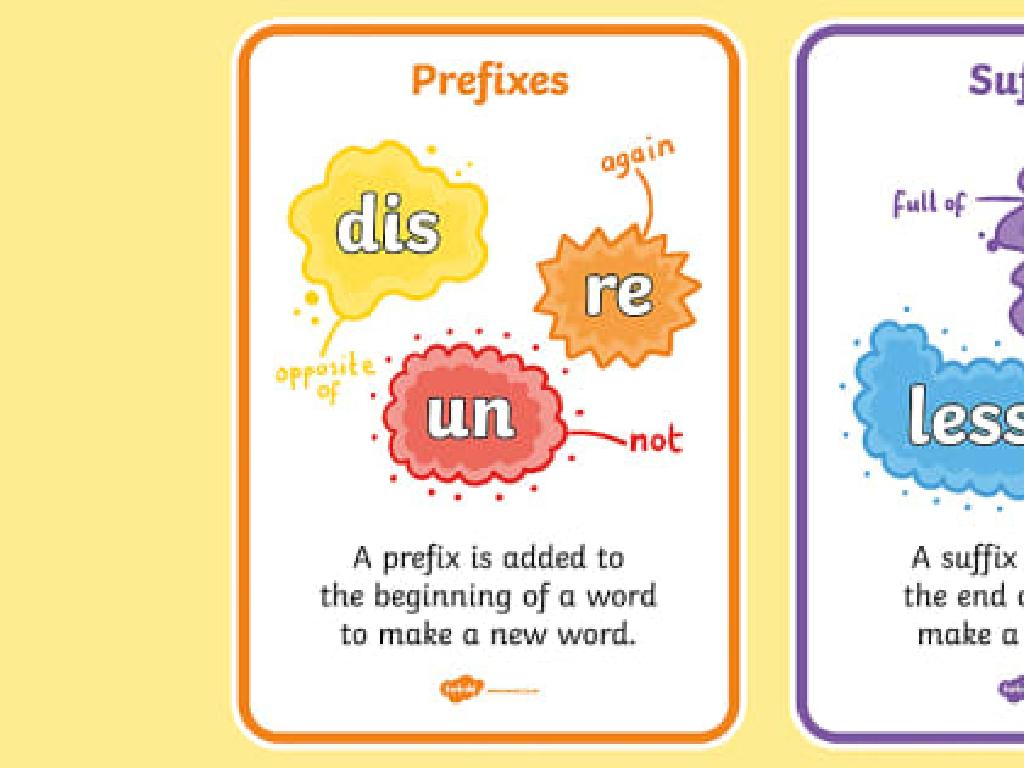Use Semicolons, Colons, And Commas With Lists
Subject: Language arts
Grade: Eighth grade
Topic: Semicolons, Colons, And Commas
Please LOG IN to download the presentation. Access is available to registered users only.
View More Content
Mastering List Punctuation: Semicolons, Colons, and Commas
– The role of punctuation in clarity
– Punctuation guides readers through our sentences.
– Using semicolons in complex lists
– Separate items in a list when the items themselves contain commas.
– Colons to introduce lists
– Use a colon before listing items, especially after phrases like ‘such as’ or ‘including’.
– Commas for simple list separation
– Use commas to separate words or phrases in a simple list.
|
This slide introduces the importance of punctuation in ensuring clear communication, with a focus on using semicolons, colons, and commas in lists. Emphasize that punctuation acts like road signs for readers, guiding them through the structure and meaning of sentences. Semicolons are particularly useful in lists that contain multi-part items or phrases with internal commas to avoid confusion. Colons are used to signal the start of a list and can be preceded by a complete sentence. Commas are the most common form of punctuation in lists and are used to separate simple items. Provide examples for each case and encourage students to practice punctuating lists for clarity.
Mastering the Semicolon in Lists
– Understanding the semicolon
– A punctuation mark indicating a pause, stronger than a comma
– Semicolon usage in lists
– Use semicolons to separate items in a list when the items are long or contain internal punctuation
– Example: Complex list separation
– ‘We visited the Eiffel Tower, Paris; the Colosseum, Rome; and the Statue of Liberty, New York.’
|
This slide aims to clarify the use of semicolons in lists, especially when dealing with complex items that include additional commas. Begin by defining a semicolon and its purpose in writing. Emphasize that semicolons are used to separate items in a list to avoid confusion when the items themselves contain commas. Provide the example on the slide to illustrate how semicolons can effectively clarify a list of items that include descriptions or multiple parts. Encourage students to practice by writing their own lists with complex items, using semicolons to aid clarity.
Mastering the Colon: Introducing Lists
– Understanding the colon’s role
– A punctuation mark used to start a list or quote after a complete sentence.
– Introduce lists with a colon
– Use a colon after a sentence that is complete to show a list is following.
– Example: Complete sentence list
– ‘She packed for her trip: a toothbrush, towel, and her favorite book.’
|
This slide aims to teach students the proper use of a colon when introducing lists. Emphasize that a colon can only follow a complete sentence, and it signals that a list, quote, or explanation is coming next. Provide clear examples, showing that the sentence before the colon must be able to stand alone. Encourage students to practice by writing their own sentences followed by lists, ensuring they understand the concept of a complete sentence. Discuss common mistakes, such as using a colon after ‘such as’ or ‘including,’ which is unnecessary since these phrases already indicate that a list will follow.
Mastering Commas in Lists
– Understand commas in lists
– Commas help separate items in a series for clarity
– Serial comma usage
– Also known as the Oxford comma, it’s used before the ‘and’ or ‘or’ in a list
– Example: Simple list separation
– For instance: apples, oranges, and bananas
|
This slide focuses on the use of commas within lists to improve clarity in writing. Emphasize the role of commas in separating items and preventing confusion. Discuss the serial (Oxford) comma, which is placed before the conjunction in a list, and its importance in maintaining the meaning of a sentence. Provide examples of lists with and without the serial comma to illustrate its effect on clarity. Encourage students to practice punctuating lists and to consider style guides they may encounter that recommend for or against the serial comma.
Mastering Punctuation: Semicolons, Colons, and Commas
– Understanding when to use each mark
– Semicolons join related independent clauses; colons introduce lists or explanations; commas separate items in a list.
– Side-by-side comparison of examples
– Compare ‘I have a cat; my sister has a dog.’ to ‘I need the following: bread, milk, and eggs.’ and ‘We visited Paris, London, and Berlin.’
– Practice identifying correct punctuation
– Determine which punctuation fits: ‘We can go to the beach we can go to the park.’
|
This slide aims to clarify the distinct uses of semicolons, colons, and commas in list contexts. Emphasize the role of semicolons in linking closely related but independent clauses without a conjunction. Explain that colons are used to introduce a list or an explanation that follows an independent clause. Commas are the simplest, separating items within a list. Provide side-by-side examples to illustrate the differences clearly. For the practice activity, present sentences where students must choose the appropriate punctuation mark, reinforcing their understanding through application. Encourage discussion on why each mark is used in the given context.
Let’s Practice Punctuation!
– Activity: Craft sentences with punctuation
– Group Work: Create lists with ; : ,
– Use semicolons to separate items in a complex list
– Share your lists with the class
– Each group will present their list to the class
– Discuss the usage of each punctuation
– Discuss when to use each punctuation in lists
|
This slide is for a class activity focused on applying the use of semicolons, colons, and commas in list creation. Students will work in groups to craft sentences that correctly use these punctuation marks. They should focus on using semicolons to separate items in a list that already contains commas for clarity, colons to introduce a list, and commas to separate simple items. After creating their lists, each group will share with the class, providing an opportunity for peer learning. The discussion should revolve around the correct usage of each punctuation mark, with examples provided. Possible activities: 1) Comparing lists of items with and without proper punctuation. 2) Correcting a paragraph that misuses punctuation. 3) Writing a short story that includes a list using all three punctuation marks. 4) Creating a poster with rules and examples for each mark. 5) A quiz game where students identify the correct punctuation in sentences.
Class Activity: Punctuation Challenge
– Write a paragraph with lists
– Use semicolons, colons, and commas
– Include a list with semicolons; another with colons: and one with commas, to separate items.
– Exchange work for peer review
– Provide feedback on punctuation
– Focus on correct usage and clarity in lists.
|
This activity is designed to reinforce the use of semicolons, colons, and commas in list-making within a paragraph. Students should write a short paragraph on any topic that includes at least one list using each type of punctuation. After writing, they will exchange their paragraphs with a peer and review each other’s work, focusing on the correct use of punctuation for lists. Teachers should provide examples and remind students of the rules for each punctuation mark before starting. Possible activities: 1) Writing a paragraph about their favorite foods, hobbies, or places to visit. 2) Describing a process or set of instructions with lists. 3) Creating a narrative that includes a list of items or actions. 4) Composing a descriptive paragraph that lists characteristics or features.
Punctuation Wrap-up & Homework
– Recap punctuation importance
– Homework: Find punctuation examples
– Look for semicolons, colons, and commas in your reading material
– Identify semicolons, colons, commas
– How do these punctuations organize or clarify lists?
– Study for upcoming punctuation quiz
|
This slide aims to summarize the lesson and set expectations for homework and assessment. Emphasize the role of punctuation in clear communication. For homework, students should find real-world examples of semicolons, colons, and commas to reinforce their understanding. Encourage them to consider how these punctuation marks are used to organize lists and clarify meaning in sentences. Prepare them for a quiz by reviewing the rules and applications of each punctuation mark. Offer study tips, such as creating their own example sentences or explaining the rules to a peer.






